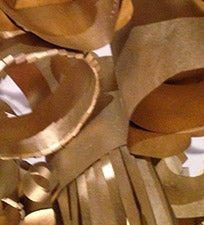

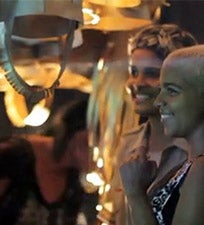
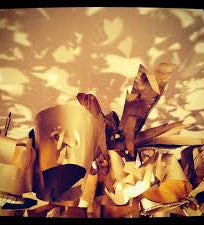
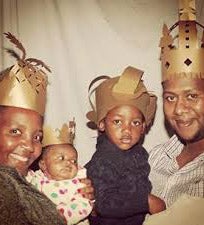
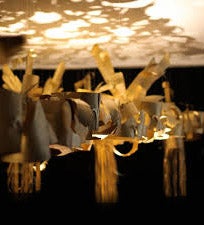
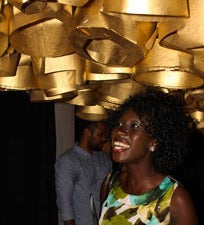


What is a crown? You would think that defining your everyday noun is an easy task. Turns out it’s not. Take for instance a crown. This object serves as the primary symbol of Shani Peters’ installation. When I try to describe it, I struggle to come up with a coherent definition  that doesn’t sound like verbal gobbledy-goop. A reason for my struggle might be that most words are more complex than they initially seem, carrying multiple connotations. Historically, crowns symbolized monarchic power. The wearer of a crown, a king or queen, was empowered by donning the ornate headpiece. For many in the population who were disenfranchised, crowns stood for oppressive government control. Instead of power being invested in a ruler by the will of the people, the crown symbolized an unjust division of power. The crown, in the royal sense, does not function in current U.S. culture as it did historically in monarchies or totalitarian societies. Continue reading
that doesn’t sound like verbal gobbledy-goop. A reason for my struggle might be that most words are more complex than they initially seem, carrying multiple connotations. Historically, crowns symbolized monarchic power. The wearer of a crown, a king or queen, was empowered by donning the ornate headpiece. For many in the population who were disenfranchised, crowns stood for oppressive government control. Instead of power being invested in a ruler by the will of the people, the crown symbolized an unjust division of power. The crown, in the royal sense, does not function in current U.S. culture as it did historically in monarchies or totalitarian societies. Continue reading
Part theory, part experiential was the description given to us, the students of “Black Art, White Cube”, by Professor Ray Silverman on the first day of class in January.  This blog post is a reflection on the relationship between The Crown and the students of Afro-American and African Studies 458: “Black Art, White Cube”; the classroom: ours. The Crown provided our class with a learning experience. The exhibitions in GalleryDAAS and the Institute for the Humanities Gallery served not only as a way to engage in debates surrounding difficult issues in contemporary art (and its relationship to the modern display, the ‘White Cube’). Continue reading
This blog post is a reflection on the relationship between The Crown and the students of Afro-American and African Studies 458: “Black Art, White Cube”; the classroom: ours. The Crown provided our class with a learning experience. The exhibitions in GalleryDAAS and the Institute for the Humanities Gallery served not only as a way to engage in debates surrounding difficult issues in contemporary art (and its relationship to the modern display, the ‘White Cube’). Continue reading

— Lauren Plawecki
Based on a true story. But, trust me, you’re not going to believe it.
Chameleon Street tells the life story of William Douglas Street, a master manipulator who manages to fool everyone in his life, even those closest to him, by reinventing himself over and  over again. Throughout the film, Street transforms himself from a surgeon (who actually performs surgery), to a student at Yale (filmed on University of Michigan’s campus), to a Times reporter, to a lawyer; continuing to run from his true identity as a Black man even after he is arrested (twice). And, yes, it is a true story.
over again. Throughout the film, Street transforms himself from a surgeon (who actually performs surgery), to a student at Yale (filmed on University of Michigan’s campus), to a Times reporter, to a lawyer; continuing to run from his true identity as a Black man even after he is arrested (twice). And, yes, it is a true story.
Continue reading
Curators play a crucial role when preparing and exhibiting an artist’s work, but what exactly do they do? Last week I had a chance to speak with The Crown co-curators Amanda Krugliak and V. Robin Grice about their process of creating and exhibiting Shani Peters’s work. Continue reading
I had the exciting opportunity to attend the second gallery opening of Shani Peters’ The Crown: Contemporary Construction of Self in America in GalleryDAAS last Wednesday, March 18. It 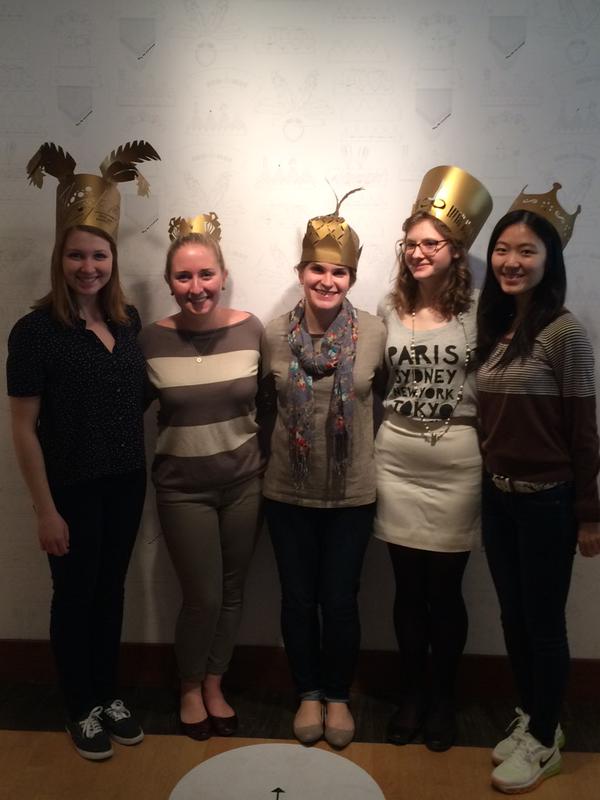 provided a wonderful follow-up to the first part of the exhibition, which opened in the Institute for the Humanities on March 12.
provided a wonderful follow-up to the first part of the exhibition, which opened in the Institute for the Humanities on March 12.
